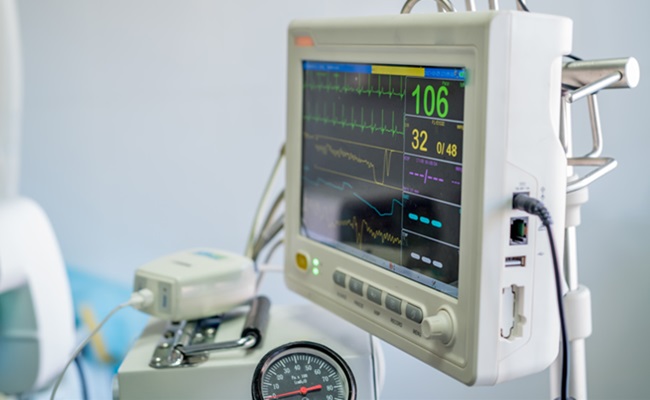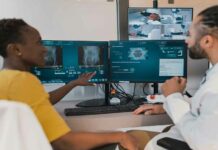Imagine you’re facing a medical procedure that requires anesthesia. You’re sitting in a stark, crowded hospital waiting room, feeling your anxiety build. For many, this is an all-too-familiar scenario. You might worry about the drive, the sterile environment, or coordinating your recovery away from home. These are common pain points for patients needing anesthesia but reluctant to undergo it in traditional settings.
Mobile anesthesia offers a revolutionary solution to these problems by bringing medical safety and comfort right to your office. This approach transforms your experience by eliminating the stress of travel and unfamiliar environments, allowing you to undergo necessary procedures with ease and security.
What Is Mobile Anesthesia?
Mobile anesthesia brings the complete setup of anesthesia services to locations outside of traditional hospital settings. This includes all necessary equipment and skilled personnel to perform sedation for various medical procedures. It’s especially useful in dental offices, plastic surgery centers, and for podiatric surgeries. These settings benefit from mobile anesthesia because it allows patients to receive specialized care without the stress of visiting a hospital.
The core of a mobile anesthesia setup involves not just advanced medical equipment but also a team of highly trained professionals, as exemplified by Nightlight Anesthesia. Anesthesiologists and nurse anesthetists typically lead these teams, equipped with the latest in sedation technology and monitoring devices to ensure the highest standards of patient care.
They bring their expertise directly to the patient’s side, customizing anesthesia to individual needs, which enhances safety and comfort. Each provider is not only certified but has also undergone rigorous, specialized training in mobile environments to handle any situation with precision. This commitment to excellence ensures that every procedure is conducted with the utmost professionalism and adherence to safety protocols.
Such preparation ensures they can deliver care with the same level of safety and effectiveness as found in traditional hospital environments. This aspect of mobile anesthesia not only maintains high standards but also builds trust with patients and facility staff alike.
Benefits of Mobile Anesthesia
Mobile anesthesia enhances comfort and convenience for patients. Procedures done in familiar surroundings significantly reduce anxiety. This setup is particularly advantageous for those with mobility challenges or hectic schedules, as it eliminates the need to travel to a hospital. Patients can receive care in their preferred environment, making the experience less intimidating and more relaxed.
Safety is a paramount concern, and mobile anesthesia meets the highest standards. Recent studies confirm its safety record is comparable to traditional hospital settings. Anesthesia providers follow strict protocols during each procedure, ensuring every aspect of patient care is covered. This meticulous approach to safety reassures patients and healthcare providers alike.
Personalized care is another significant benefit. Mobile anesthesia allows for closer interactions between patients and healthcare providers. This closeness enables providers to tailor anesthesia plans to individual needs and specific medical conditions. Customizing care in this way not only enhances comfort but also improves overall outcomes.
Implementation in Various Specialties
In dental offices, mobile anesthesia transforms patient experiences during complex procedures. Dental surgeries such as wisdom tooth extractions and dental implants can be daunting. Mobile anesthesia brings the required sedation directly to the dental chair, enhancing patient comfort and reducing anxiety associated with such surgeries.
Cosmetic and elective surgeries also benefit from mobile anesthesia. In settings like cosmetic dermatology offices or clinics where minor plastic surgeries are performed, mobile anesthesia allows for a seamless experience. Patients can undergo procedures such as botox injections, lip fillers, or minor facial surgeries with enhanced comfort, without the need for hospital admission.
For orthopedic and minor surgeries, such as carpal tunnel release or minor joint repairs, mobile anesthesia offers a practical solution. These procedures can be completed efficiently in outpatient settings, reducing the need for hospital stays. This not only speeds up recovery time but also reduces medical costs, making it a preferred choice for both patients and surgeons.
Trends and Innovations in Mobile Anesthesia
As healthcare continues to evolve, mobile anesthesia is at the forefront of emerging trends and technological advancements. The use of cutting-edge technology, such as portable monitoring devices and compact, yet powerful, anesthesia machines, is enhancing the capabilities of mobile setups. Innovations in pharmacology are also playing a crucial role, with the development of faster-acting, shorter-duration anesthetics that are ideal for outpatient settings. These advancements contribute to safer, more efficient procedures, minimizing downtime and improving patient outcomes.
Furthermore, telemedicine is integrating with mobile anesthesia to provide real-time consultations during procedures. This allows anesthesiologists to collaborate with other specialists, ensuring comprehensive care. These technological integrations not only improve the quality of care but also expand the reach of mobile anesthesia services, making them accessible to a broader range of medical practices and patient populations.
Regulatory and Ethical Considerations
The expansion of mobile anesthesia services also brings attention to regulatory and ethical considerations. Compliance with state and federal regulations is paramount for practitioners in this field. Providers must navigate complex healthcare laws, which can vary significantly from one jurisdiction to another, to ensure that they meet all legal requirements for mobile medical services.
Ethical considerations are equally important. The commitment to patient safety and quality care must remain at the core of mobile anesthesia practices. This involves not only adhering to the highest medical standards but also ensuring informed consent and maintaining patient privacy and dignity. As mobile anesthesia becomes more prevalent, ongoing education and ethical training for providers are crucial. This ensures that they’re not only proficient in the latest medical procedures but also sensitive to the ethical dimensions of providing care in non-traditional settings.
Conclusion
Mobile anesthesia brings a host of benefits, notably enhancing safety, comfort, and providing personalized care directly at your practice. This innovative service transforms traditional medical environments, offering patients a less intimidating and more convenient alternative to hospital-based anesthesia.

Consider the impact that mobile anesthesia could have on your practice. Could it streamline your operations and improve patient satisfaction? Reflect on how this service might reshape the way you manage patient care, particularly in specialized procedures.
To explore the possibilities of mobile anesthesia further, reach out to a provider for a consultation tailored to your practice’s needs. Additionally, attending a webinar or training session can provide deeper insights into the comprehensive benefits and implementation strategies of mobile anesthesia.
















